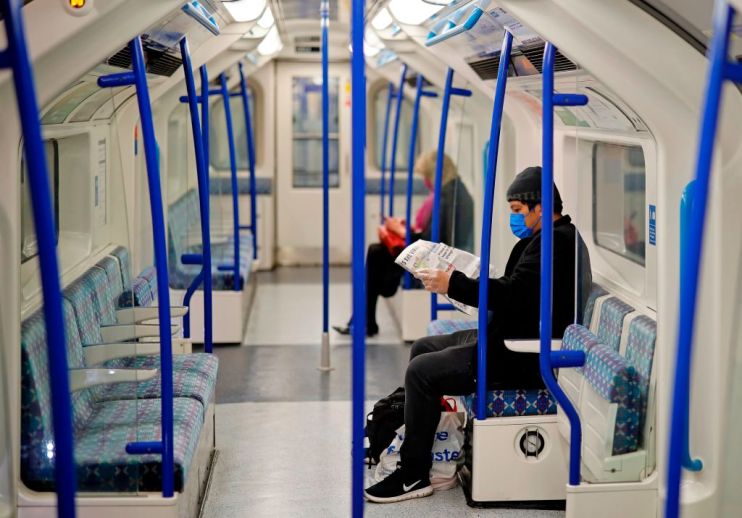Sadiq Khan: There will be no swift return to normality for TfL

The Covid-19 health crisis has led to thousands of Londoners losing their lives with grief, anxiety and anguish touching too many lives. Many businesses and livelihoods have been adversely affected. It has also had a profound impact on public transport in London – and will continue to do so long into the future.
Since the beginning of the lockdown, we have had to adapt and fundamentally change the purpose of Transport for London. Instead of encouraging more Londoners to use our world-class transport network – which we are proud to have made more affordable, more efficient and greener in recent years – we have had to focus on asking people not to travel unless absolutely essential.
Read more: Should TfL increase fares to help social distancing?
The response from the vast majority of Londoners has been fantastic. Tube journeys are down by 95 per cent and bus travel is 85 per cent below normal levels. Thanks to the heroic efforts of transport workers, despite staff shortages, we have been able to run over 60 per cent of Tube trains during rush hour and more than 80 per cent of buses to ensure that NHS staff and other essential workers can travel as safely as possible.
The Government is now looking at how the lockdown could be eased. It’s absolutely critical that the Prime Minister ensures that transport providers, like TfL, are at the heart of this process so that we get our cities and communities moving and working again both safely and sustainably.
In London, we are examining very carefully how, when the time is right, we could gradually restore services to as close to pre-COVID-19 levels as possible, safely, within the constraints imposed by staff sickness, shielding and self-isolation. But I want to be honest – no one should expect to see a swift return to how it was before the crisis. The likely requirements for social distancing will simply make this impossible.
It’s an inescapable fact that no mass transport system of the scale we have in London can operate at full capacity while maintaining social distancing at all times. Even with Tube ridership standing at just five per cent at the moment, there are times when passengers struggle to keep their distance.
This means that if the social distancing requirements remain in place, the total carrying capacity of the Tube will have to be reduced to between 13 to 20 per cent of pre-crisis levels – even with close to 100 per cent of trains running. We will also need to have a fundamentally different approach to operating stations, with strict queuing systems to limit the number of people who can access the network at any one time. Certain major stations where TfL and National Rail services interchange are likely to present the biggest challenge.
Likewise, there will need to be big changes to how we run the bus network. The carrying capacity of double decker buses could be reduced from 85 passengers to just 15. During the lockdown, we have been encouraging social distance queuing at some of our 21,500 bus stops by putting markings on the pavement. But this system will not be possible to maintain when passenger numbers start to increase. We are looking at possible solutions and have already started working with London boroughs to widen pavement space in key locations to alleviate the pressure. However, it will still be impossible to maintain social distance if passenger numbers increase even modestly.
It’s clear that there are some enormous challenges to overcome to get public transport safely up and running again for the wider public, and that it will require the Government to take some key steps in the coming weeks.
Firstly, everyone who can work from home will have to be told to continue to do so for the foreseeable future. This is the only way we’ll be able to avoid our transport network from becoming dangerously overcrowded once the lockdown measures start to be eased. Working hours will also need to be staggered to avoid busy rush hours.
Secondly, the Government will have to provide additional support to enable as many people as possible to walk and cycle, particularly children living close to their schools, on top of all the things we’ve already been doing in London. What we want to avoid at all costs is a damaging car-based recovery that would be disastrous for public health, air quality and the climate emergency we face, with congestion and gridlock preventing buses and emergency services from reaching their destination.
And, crucially, the Government must agree a proper funding package for TfL. One of the many consequences of the lockdown is that despite TfL being in a strong financial position before the crisis, it is now facing an unprecedented financial crisis. Fare income has fallen by about 90 per cent with future projections also massively down and London is the only major city in Western Europe that runs without a Government grant for day-to-day transport operations. We are in constructive talks with ministers about the urgent financial support TfL needs, but time is running out.
As Mayor, I’m fully committed to working with the Government to get London moving again as quickly as possible in a way that is safe and sustainable. The sooner the Government works with us on its plans to ease the lockdown when the time is right, and agrees a proper funding package for TfL, the sooner we can put comprehensive solutions in place to ensure as many Londoners as possible will be able to travel around our city safely.
This next phase is going to be one of most important and difficult challenges in TfL’s history. I will continue to be upfront and honest with Londoners as we work through these tough times and try and find solutions to keep our city moving, while building a greener, cleaner and healthier city for the future.
